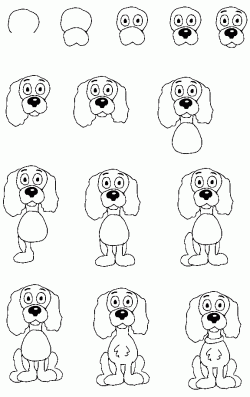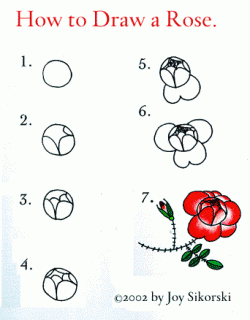Visual Instruction Plan

“A Picture is Worth A Thousand Words”
-old Chinese Proverb
The idea of the VIP is to make independent learners out of helpless handraisers. As teachers, we want to be able to “work the crowd” as much as possible and see to each hand. However, if we have a visual instructional plan already made, the hands should go down drastically. A Visual Instruction Plan is a “lesson plan in visual form” (Jones, 2007, p. 71). It provides the students with a step by step instruction manual that they can easily reference when stuck on a problem. This plan gives a visual prompt to a student on what to do next.
A VIP can be used in most subjects such as algebra, art, geometry, English, and even history. Another positive aspect of the VIP is that it requires little to no words; therefore all grades can use it. Whether it’s a quick reference in a simple addition problem in first grade, or an algebraic problem in high school, VIP’s can be used.
There are many different types of VIPs. A teacher can use graphs, pictures, outlines, mind maps, charts, pie graphs, or drawings. Here is one example of a simple VIP:
Step 1: 84 Step 2: 84 Step 3: 84
+12 +12 +12
6 96
Step 4: Move on to the next problem.
This “permanent record” can eliminate all the “What do I do next?” questions. The two main goals of a visual instructional plan are to accelerate the learning process and aid in the weaning process. Some students seem to need clarifying every few minutes on what to do next. The VIP can partner with the Praise, Prompt, and Leave by approaching a hand raiser and saying, “Robert, I like the way you did step one, the next thing to do is step two (point to the board or work sheet). That takes about ten to fifteen seconds, and the student can look at the board, identify the next step, and follow the visual directions.
Spiritual Application: Luke 6:43 says, “For a good tree does not bear bad fruit, nor does a bad tree bear good fruit.” The Bible teaches us that if we are Christians, we are to live a life that produces fruit that supports our claim. People around us should know who we follow by what we produce in our life. There is only ONE way, truth and life, says John 14:6. In relating the visual instruction plan to these lessons, we can see that having a clear VIP can only produce good things. It helps guide the students to the right answers and gives them the means of doing that.

